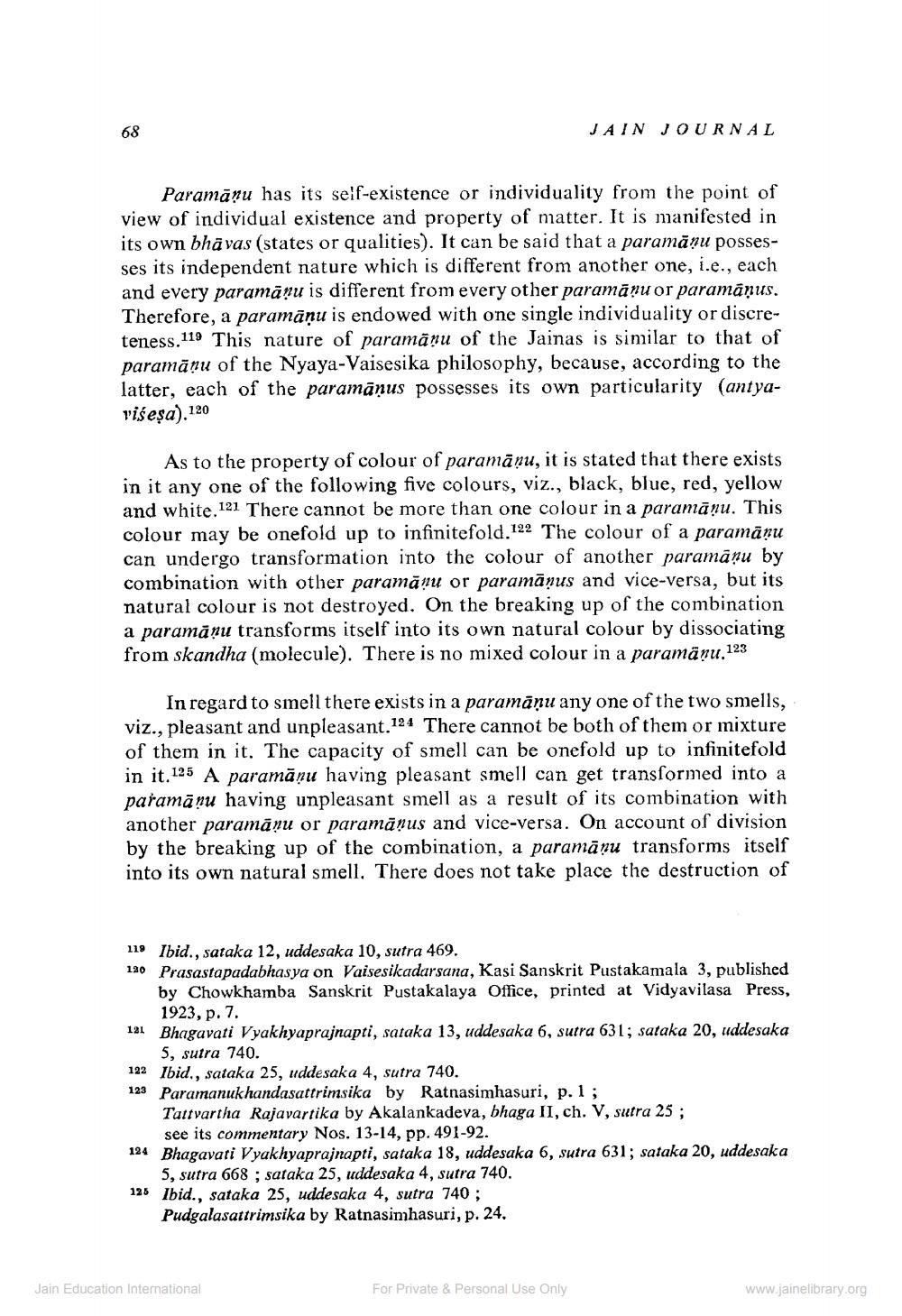________________
68
Paramāņu has its self-existence or individuality from the point of view of individual existence and property of matter. It is manifested in its own bhāvas (states or qualities). It can be said that a paramāņu possesses its independent nature which is different from another one, i.e., each and every paramāņu is different from every other paramāņu or paramāņus. Therefore, a paramāņu is endowed with one single individuality or discreteness.119 This nature of paramaņu of the Jainas is similar to that of paramāņu of the Nyaya-Vaisesika philosophy, because, according to the latter, each of the paramāņus possesses its own particularity (antyaviseṣa).120
JAIN JOURNAL
As to the property of colour of paramānu, it is stated that there exists in it any one of the following five colours, viz., black, blue, red, yellow and white. 121 There cannot be more than one colour in a paramāņu. This colour may be onefold up to infinitefold.122 The colour of a paramāņu can undergo transformation into the colour of another paramaņu by combination with other paramāņu or paramāņus and vice-versa, but its natural colour is not destroyed. On the breaking up of the combination a paramāņu transforms itself into its own natural colour by dissociating from skandha (molecule). There is no mixed colour in a paramāņu.123
In regard to smell there exists in a paramāņu any one of the two smells, viz., pleasant and unpleasant.124 There cannot be both of them or mixture of them in it. The capacity of smell can be onefold up to infinitefold in it.125 A paramāņu having pleasant smell can get transformed into a paramāņu having unpleasant smell as a result of its combination with another paramāņu or paramaņus and vice-versa. On account of division by the breaking up of the combination, a paramāņu transforms itself into its own natural smell. There does not take place the destruction of
119 Ibid., sataka 12, uddesaka 10, sutra 469.
130 Prasastapadabhasya on Vaisesikadarsana, Kasi Sanskrit Pustakamala 3, published by Chowkhamba Sanskrit Pustakalaya Office, printed at Vidyavilasa Press, 1923, p. 7.
121 Bhagavati Vyakhyaprajnapti, sataka 13, uddesaka 6, sutra 631; sataka 20, uddesaka 5, sutra 740.
122 Ibid., sataka 25, uddesaka 4, sutra 740.
123 Paramanukhandasattrimsika by Ratnasimhasuri, p. 1;
Tattvartha Rajavartika by Akalankadeva, bhaga II, ch. V, sutra 25;
see its commentary Nos. 13-14, pp. 491-92.
124 Bhagavati Vyakhyaprajnapti, sataka 18, uddesaka 6, sutra 631; sataka 20, uddesaka
5, sutra 668; sataka 25, uddesaka 4, sutra 740.
125 Ibid., sataka 25, uddesaka 4, sutra 740;
Pudgalasattrimsika by Ratnasimhasuri, p. 24.
Jain Education International
For Private & Personal Use Only
www.jainelibrary.org




